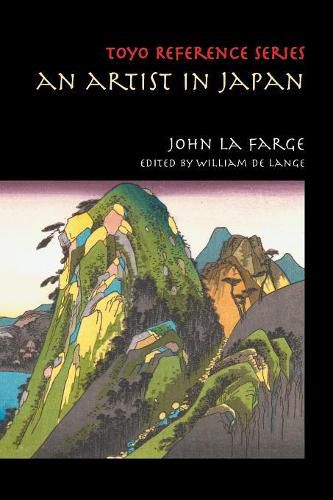Readings Newsletter
Become a Readings Member to make your shopping experience even easier.
Sign in or sign up for free!
You’re not far away from qualifying for FREE standard shipping within Australia
You’ve qualified for FREE standard shipping within Australia
The cart is loading…






This title is printed to order. This book may have been self-published. If so, we cannot guarantee the quality of the content. In the main most books will have gone through the editing process however some may not. We therefore suggest that you be aware of this before ordering this book. If in doubt check either the author or publisher’s details as we are unable to accept any returns unless they are faulty. Please contact us if you have any questions.
Finally the treatment these true classics deserve: thoroughly re-edited and modernized texts, with glossary, index…and beautiful layout to boot.
John la Farge (1835-1910), traveling Japan’s interior in the summer of 1886, sees Japan in a way only he can: through the eyes of a painter, observing a vast canvas in which he discerns every color, every shade, every nuance, every remarkable detail.
With La Farge we visit the Tokugawa tombs at Nikko, the Daibutsu at Kamakura, the many temples of the ancient capitals of Kyoto and Nara. We learn of the people and traditions that produced these sites that still draw millions to Japan. With him we marvel at the ingenuity of the architecture, the exquisite detail of the sculptures, the refreshing simplicity of attitude as expressed in the paintings.
Coming face to face with a profoundly different culture, La Farge is at times perplexed, bewildered, even frustrated, but he is always admiring–of its ingenuity, of its tenacity, of its close relationship with nature as expressed in all its manifestations.
An Artist in Japan is full of sensitive descriptions, of the pleasant domesticity of city life, of the hustle and bustle on Japan’s great thoroughfares, of everyday people going about their everyday lives. It is a marvelous panoramic view of a Japan still firmly rooted in its traditions, but already in the thrall of Westernization. It is, in short, a work of art.
$9.00 standard shipping within Australia
FREE standard shipping within Australia for orders over $100.00
Express & International shipping calculated at checkout
This title is printed to order. This book may have been self-published. If so, we cannot guarantee the quality of the content. In the main most books will have gone through the editing process however some may not. We therefore suggest that you be aware of this before ordering this book. If in doubt check either the author or publisher’s details as we are unable to accept any returns unless they are faulty. Please contact us if you have any questions.
Finally the treatment these true classics deserve: thoroughly re-edited and modernized texts, with glossary, index…and beautiful layout to boot.
John la Farge (1835-1910), traveling Japan’s interior in the summer of 1886, sees Japan in a way only he can: through the eyes of a painter, observing a vast canvas in which he discerns every color, every shade, every nuance, every remarkable detail.
With La Farge we visit the Tokugawa tombs at Nikko, the Daibutsu at Kamakura, the many temples of the ancient capitals of Kyoto and Nara. We learn of the people and traditions that produced these sites that still draw millions to Japan. With him we marvel at the ingenuity of the architecture, the exquisite detail of the sculptures, the refreshing simplicity of attitude as expressed in the paintings.
Coming face to face with a profoundly different culture, La Farge is at times perplexed, bewildered, even frustrated, but he is always admiring–of its ingenuity, of its tenacity, of its close relationship with nature as expressed in all its manifestations.
An Artist in Japan is full of sensitive descriptions, of the pleasant domesticity of city life, of the hustle and bustle on Japan’s great thoroughfares, of everyday people going about their everyday lives. It is a marvelous panoramic view of a Japan still firmly rooted in its traditions, but already in the thrall of Westernization. It is, in short, a work of art.